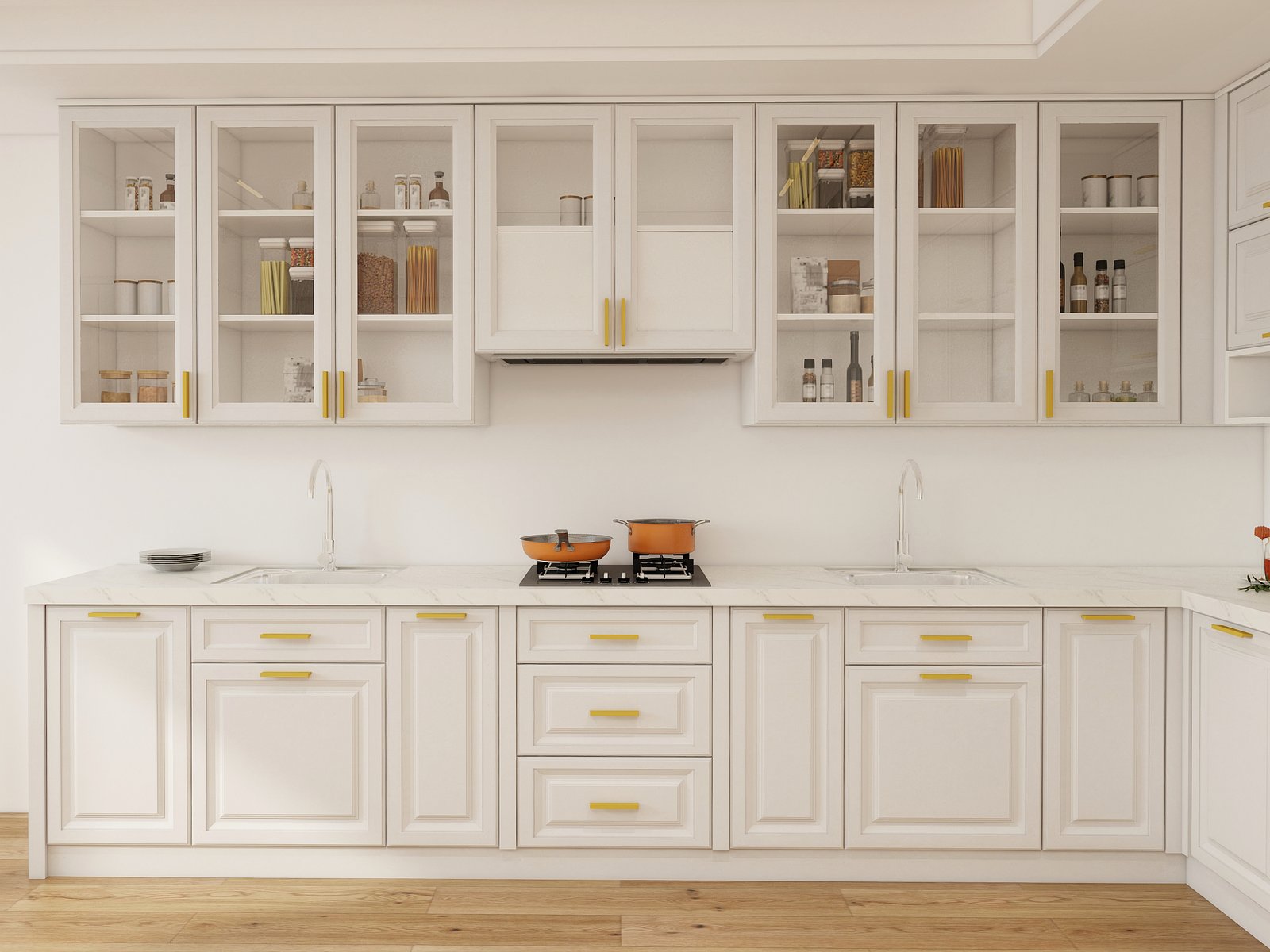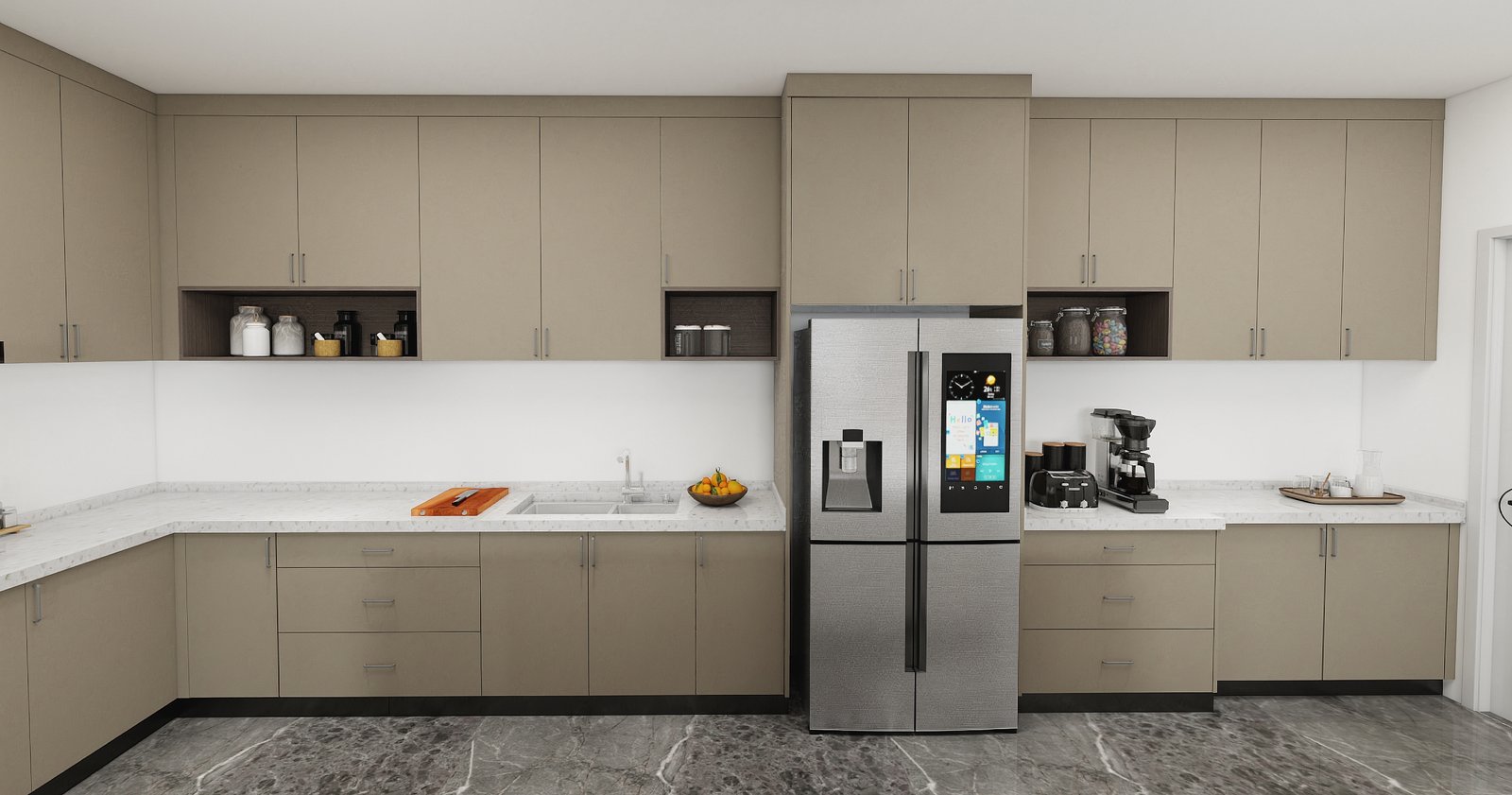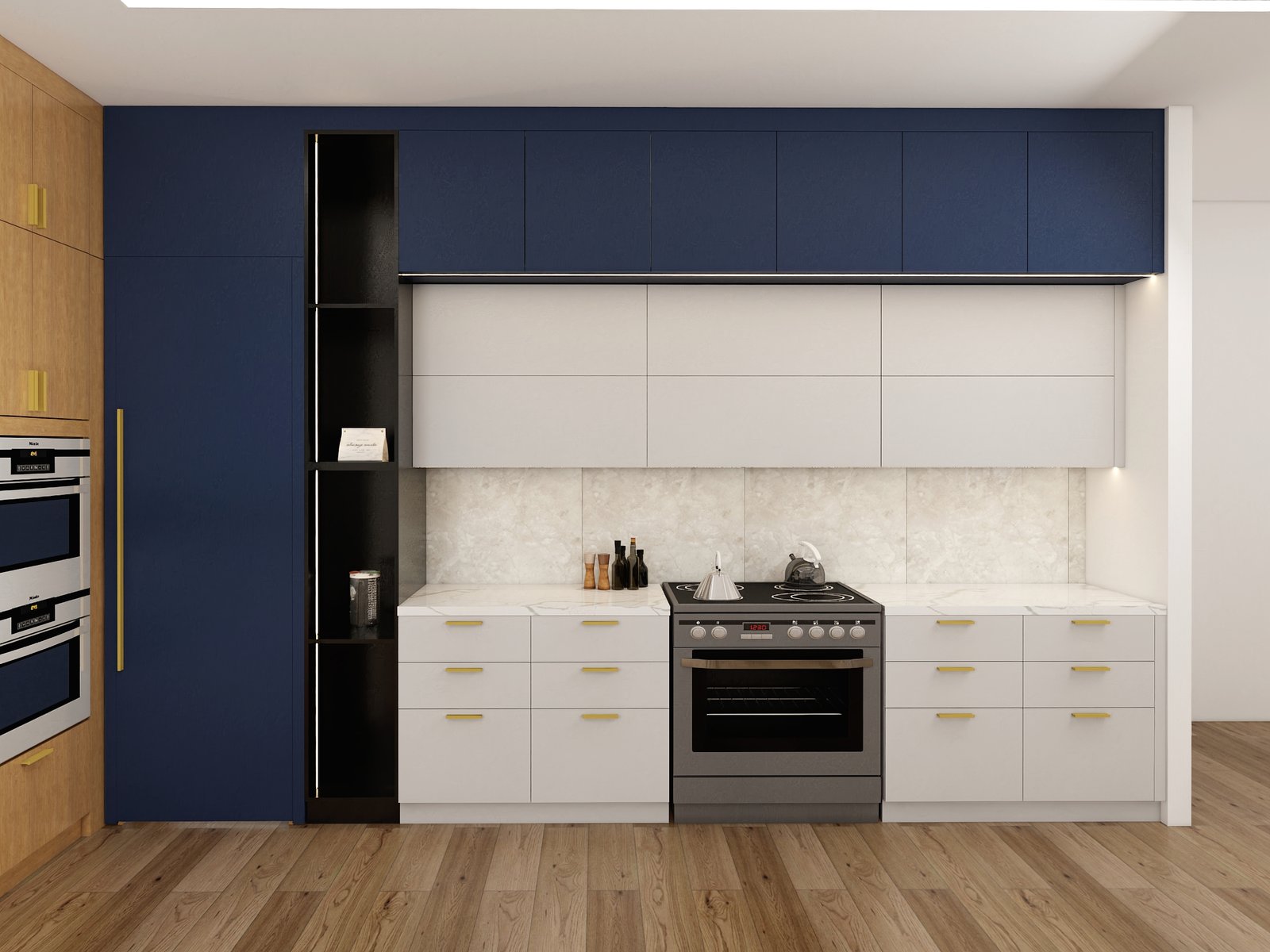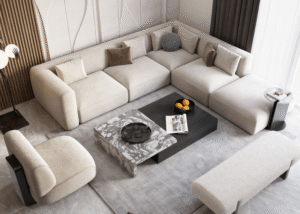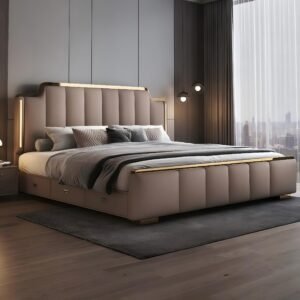In kitchen design, the construction of the cabinets not only determines their appearance, but also affects their functionality, durability, and installation methods. Kitchen cabinets come in a variety of styles, finishes, and materials. Understanding the basic types of kitchen cabinet construction will help you make more informed purchasing decisions while ensuring that the cabinets can meet your needs. Generally speaking, the construction of kitchen cabinets can be divided into three categories: framed kitchen cabinets, frameless kitchen cabinets, and inset kitchen cabinets. Today, CS Home will analyze the characteristics, advantages, and applicable scenarios of these three types of cabinet construction in detail to help you choose the most suitable solution in your kitchen design.
Framed Kitchen Cabinets
Framed cabinets, also known as face-frame cabinets, are the most traditional and common kitchen cabinet structure and are most widely used in the United States. This design has a solid frame attached to the front of the cabinet body – usually made of hardwood such as oak, maple, or cherry. Frames are generally 1.5 to 2 inches wide and feature doors and drawers built around the cabinet opening on the front frame of the cabinet body, which can be fully covered, partially covered, or flush with the frame to provide additional support for the whole.
Features:
- Construction: The frame is made of solid or engineered wood, and the cabinet body (side panels, back panels and bottom panels) is usually made of plywood or particle board.
- Appearance: The visible frame adds a traditional and clear border to the door panels and drawers, enhancing the classic appeal.
- Hardware: Hinges and handles are fixed to the frame to provide a stable mounting point.
Benefits:
- Durability: The face frame adds extra strength and stability, making the cabinet less likely to warp or shift over time.
- Versatility: Framed cabinets are suitable for many styles, from rustic farmhouse to elegant traditional kitchens, and their timeless design is popular.
- Easy installation: The frame provides a solid foundation for fixing the cabinet to the wall, simplifying the installation process.
Disadvantages:
- Space Constraints: The frame slightly reduces the cabinet opening, limiting access to interior space compared to frameless designs.
Ideal Use Cases:
Framed cabinets are perfect for homeowners who appreciate a classic or vintage aesthetic and are a classic choice for American and traditional style kitchens. They work best in larger kitchens, such as U-shaped or L-shaped layouts, where their sturdy construction can support busy families and require durable storage solutions.
Frameless Kitchen Cabinets
Frameless kitchen cabinets, often called European or full-open cabinets, are popular in modern kitchens for their minimalist design and sleek lines. Unlike framed cabinets, this design eliminates the front frame entirely, with all components attached directly to the cabinet panels, relying on a thicker, more rigid cabinet body—usually made of plywood or medium-density fiberboard (MDF)—for structural integrity. Doors and drawers cover the entire front edge of the cabinet, creating a smooth, seamless look.
Features:
- Construction: The cabinet body is made of thicker boards (usually 3/4 inch or more), and the doors are fixed directly to the side panels with hidden hinges.
- Appearance: The cabinet doors are usually full overlay designs, which completely cover the cabinet body, and the frameless design gives the cabinet a more unified and simple appearance.
- Hardware: Hidden hinges and modern handles enhance the streamlined design, often with handleless options to add a futuristic feel.
- Space Capacity: More internal storage space because there is no front frame blocking it.
Advantages:
- Maximize space: The frameless design makes full use of the cabinet’s storage space, which is perfect for small kitchens.
- Modern appeal: The frameless design is perfect for minimalist and modern kitchens, especially with high-gloss slab doors.
- Smooth lines: Once the cabinet doors and drawers are aligned, the overall appearance is very neat
Disadvantages:
- Weak structural support: Frameless designs may be more prone to tilting or shifting if the materials or installation are not correct.
- High installation requirements: Precise measurement and leveling are required, as there is no frame to cover up imperfections.
Ideal use scenarios:
Frameless cabinets are widely used in modern or European style kitchen designs, suitable for small or urban kitchens with limited space, such as right-angle or L-shaped layouts, with navy blue acrylic or gray laminate slab doors.
Built-in Kitchen Cabinets
Recognized for their refinement and craftsmanship, built-in kitchen cabinets feature flush-mounted doors that create a sophisticated, handcrafted look that creates a premium look.
Features:
- Construction: Slot-type cabinets have doors that fit flush with the frame, similar to framed designs, but with doors and drawers recessed into the frame opening, requiring exquisite craftsmanship.
- Appearance:Flush design lends seamless elegance, while exposed hinges often add vintage appeal.
- Hardware: Doors often have concealed hinges, and decorative hinges and knobs are common, adding a handcrafted feel.
Benefits:
- High-end aesthetic:Built-in cabinets exude luxury and sophistication, resembling fine furniture rather than ordinary cabinets.
- Durability:A sturdy frame combined with precise door installation ensures long-term stability and resistance to wear and tear.
- Customization: Often custom-made, with adjustable sizes, finishes, and details to meet a variety of unique style needs.
Disadvantages:
- Cost:Built-in cabinets are the most expensive option of the three due to their intensive labor and high-quality material requirements.
- Maintenance: Flush designs are sensitive to wood expansion or contraction caused by humidity, requiring occasional adjustment of hinges or door panels.
Ideal Use Scenarios:
Built-in cabinets are often found in high-end or luxury kitchens, suitable for high-end kitchens that value craftsmanship and elegance, such as large U-shaped or island layouts. Suitable for homeowners who pursue personalization and top-notch design.
How to choose the right cabinet construction type for you?
Choosing the right kitchen cabinet construction depends on budget, style preferences and actual needs. The following factors are important to consider:
- Framed cabinets: Suitable for spacious classic kitchens, if you want a durable, traditional look and moderate cost.
- Frameless cabinets: Suitable for small or minimalist kitchens, if you pursue a modern, space-efficient and possibly lower-priced design.
- Built-in cabinets: Suitable for high-end renovations or feature kitchens, if the budget allows and you value a luxurious custom feel.
- Storage needs: Frameless cabinets perform best in space utilization, while slot cabinets are better for storing lighter items that need to be sorted.
- Long-term durability: Framed and slot cabinets have higher durability, while the key to frameless cabinets is the quality of the cabinet itself.
- Kitchen layout: Framed and built-in cabinets are suitable for U-shaped or right-angled islands, while frameless cabinets are suitable for L-shaped or right-angled layouts
Summary
By understanding the three basic constructions of kitchen cabinets in depth, you can choose the most suitable cabinet type according to your needs and style preferences. Whether it’s the stability and practicality of framed cabinets, the stylish and smooth frameless cabinets, or the exquisite craftsmanship of slot cabinets, each structure can play an important role in your kitchen design. Whether you are upgrading a small apartment kitchen or creating a spacious cooking paradise, I hope CS Home can help you get inspiration for your kitchen transformation! Are you ready to start your kitchen journey? If you want to know more, please contact us!
FAQs
Q1. What are the three basic types of kitchen cabinet construction?
A1:
Framed cabinets, frameless cabinets, and built-in cabinets are the three main types.
Q2. Which cabinet type is best for maximizing storage space in small kitchens?
A2: Frameless cabinets are ideal for small kitchens as they utilize storage space effectively without a front frame.
Q3. How can you choose the right kitchen cabinet type for your needs?
A3: Consider factors like budget, kitchen style, layout, storage needs, and long-term durability to make an informed decision.
Q4. What’s the difference between framed, frameless, and inset cabinets?
A4: Framed have a front frame for tradition and strength, frameless are modern with more space, and inset offer a flush, luxurious look.
Q5. Which cabinets suit small kitchens best?
A5: Frameless cabinets, for their space-saving, minimalist design.

